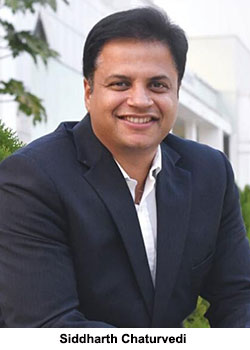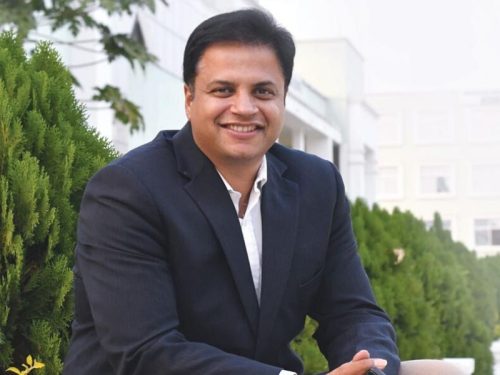Vocational education – Siddharth Chaturvedi
 An engineering and business management alumnus of NIT, Bhopal, and the S.P. Jain Institute of Management & Research, Mumbai, with five years of work experience in blue-chip corporates (ITC, IBM), Siddharth Chaturvedi is executive vice president of the family promoted AISECT Group (estb.1985) of higher education institutions. The AISECT Group manages 23,000 vocational skills centres in 517 districts countrywide, and five universities in Madhya Pradesh, Jharkhand, Bihar and Chhattisgarh with an aggregate enrolment of over 100,000 students.
An engineering and business management alumnus of NIT, Bhopal, and the S.P. Jain Institute of Management & Research, Mumbai, with five years of work experience in blue-chip corporates (ITC, IBM), Siddharth Chaturvedi is executive vice president of the family promoted AISECT Group (estb.1985) of higher education institutions. The AISECT Group manages 23,000 vocational skills centres in 517 districts countrywide, and five universities in Madhya Pradesh, Jharkhand, Bihar and Chhattisgarh with an aggregate enrolment of over 100,000 students.
How satisfied are you with NEP 2020’s proposals for vocational education and training (VET)?
Even if belatedly, NEP 2020 has rightly acknowledged skill development and vocational training as integral to holistic education. It seeks to develop appreciation of differing vocations through hands-on learning and projects, starting from primary school. I am delighted that NEP 2020 has accepted our long-standing demand to integrate VET into the formal education system.
What are your suggestions for smooth integration of VET into mainstream school education as recommended by NEP 2020?
My proposals to smoothly integrate VET into school education are:
• Map schools with nearby vocational training and skill development centres
• Allow trainers/faculty of VET institutes to take classes in mainstream schools
• Allot equal credits to vocational subjects as to other subjects in school curriculums
• Encourage schools to install practice labs in partnership with private VET institutes.
NEP 2020 has set a target of 50 percent of all children and youth to master a vocational skill by 2025. How realistic is this?
It’s daunting but feasible if we take a collaborative, holistic approach. To achieve this target, the country’s 1.5 million schools need to closely collaborate with neighbouring skill training centres, ITIs, polytechnics, industry, agriculture and allied sectors to develop and deliver age-appropriate VET programmes to school children. Even if we miss the target, we will still cover plenty of ground over the next five years.
Your suggestions for integrating VET into higher education…
• Map QP (qualification pack)-based content of industry trades with undergrad curriculums
• Facilitate apprenticeship-based skilling and training of tertiary students in large and/or MSME companies
• Overhaul higher education assessment systems to also evaluate practical knowledge of vocational trades and skills
• Launch a nationwide VET faculty capacity building/upskilling programme to provide trained teachers for largescale
infusion of VET programmes in higher education institutions.
NEP 2020 has proposed a National Committee for the Integration of Vocational Education (NCIVE). What should be the composition and time frame of the committee?
Careful composition of this committee is imperative for universalising VET. Therefore, NCIVE should comprise representatives from government bodies such as MSDE, NCVET, DGET, SSC, and NSDC; private sector VET experts; representatives from the Pandit Sunderlal Sharma Central Institute of Vocational Education, Bhopal to undertake training of trainers (TOT); and industry associations. The NCIVE should start work by early 2021.
What do you see as major implementation roadblocks for integrating vocational education into schools and HEIs?
• Resistance from faculty, perhaps parents
• Identification of appropriate vocational trades by schools
• Developing good quality and ageappropriate content and curriculums for vocational trades
• Collaboration between industry and vocational training institutions, especially in rural areas
• Schools recruiting sufficiently skilled VET trainers.
Is there any important area of vocational education which NEP 2020 has failed to address?
NEP 2020 hasn’t stressed the importance of students charting career progression pathways through counselling and psychometric testing. I hope this will find a place in the policy implementation roadmap.
Read: Implementing NEP 2020: Expert advice for central government
Also read: 50 Leaders who can revive Indian education – Siddharth Chaturvedi
















Add comment